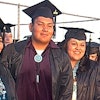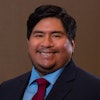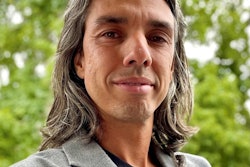EAGLE BUTTE, S.D.— American Indian students could achieve more academically if their crumbling schools are fixed, more money is provided for teachers and supplies and tribes gain more control of what happens in classrooms, tribal officials said Friday at a congressional hearing.
Dayna Brave Eagle, education director for the Oglala Sioux Tribe, said the federal government has been unsuccessful while controlling the schools the past century.
“They have failed. It’s time now for the tribes to make decision for their future,” Brave Eagle said.
Rep. Stephanie Herseth Sandlin, (D-S.D.), held a field hearing on Indian education on behalf of the House Natural Resources Committee, which deals with Native American issues. She said testimony from the hearing will help Congress decide what changes are needed in Indian education when lawmakers reauthorize the federal school improvement law known as No Child Left Behind.
Herseth noted that less than a third of the U.S. Bureau of Indian Education Schools met annual progress requirements in 2007. Only a third of Indian students graduate from high school in South Dakota, far below the 75 percent overall graduation rate, she said.
Education officials said reservations have extremely high rates of poverty, unemployment, teenage suicide and alcohol and drug abuse.
Indian students also fall behind the average in academic achievement. For example, 76 percent of all South Dakota students scored as advanced or proficient in reading tests given last spring, while only 50 percent of Indian students were advanced or proficient.
Schools for Indian students may need more flexibility in meeting student needs and measuring academic progress, Herseth Sandlin said. “A good education is essential for the future of Indian youth.”
David Talayumptewa, assistant deputy director of administration of the BIE, said federal agencies are cooperating to improve Indian education. The BIE is making progress in improving student achievement, but more remains to be done, he said.
The BIE funds 183 schools in 23 states, and 63 are now rated in poor physical condition, Talayumptewa said. He said it would take an estimated $2 billion to bring all the schools up to safety standards.
Tribal officials said more money also is needed to recruit and keep good teachers in rural areas and replace aging textbooks.
Representatives of many tribes said schools need to teach more native language and culture, which would help build the self-esteem needed to reduce teenage suicide and also motivate students to learn more in traditional academic courses.
Rachel Bernie, secretary of the Yankton Sioux Tribe, said poverty, poor school facilities and other problems can cause students to lose hope. Reservations need to improve their economies and encourage parents to value education so they make sure their children go to school, she said.
Thomas Shortbull, president of the Oglala Lakota College on the Pine Ridge Indian Reservation, said reservations in South Dakota are some of the nation’s poorest counties. The tribal college has trained a lot of teachers and nurses, but more economic development is needed because it makes no sense for the school to train students for jobs that don’t exist, he said.
Emma Jean Blue Earth, higher education director for the Standing Rock Sioux Tribe’s reservation that straddles the North Dakota-South Dakota line, said tribes need direct funding for schools, improved safety measures for students, more money for school repairs and construction and more tribal control of schools.
“There’s nothing wrong with our students. It’s our system that has failed our students,” Blue Earth said.
Hazel Red Bird, an elder of the Cheyenne River Sioux Tribe, said Indian people must take responsibility for their future.
“Ultimately, it is up to us,” she said.





















